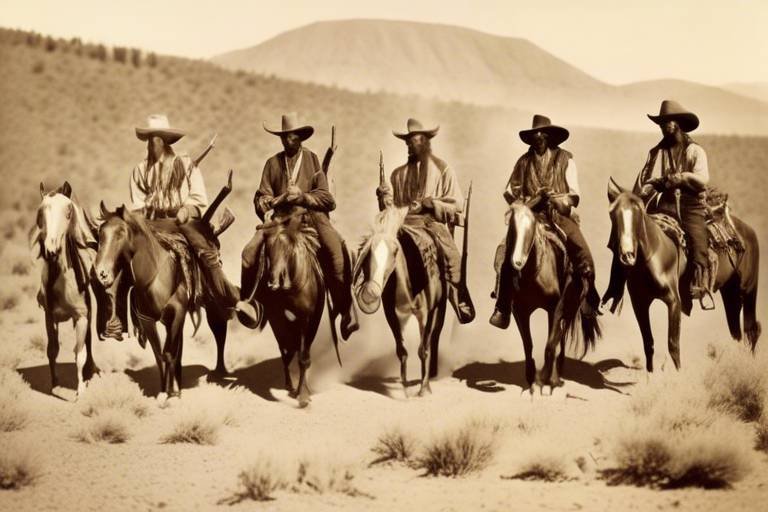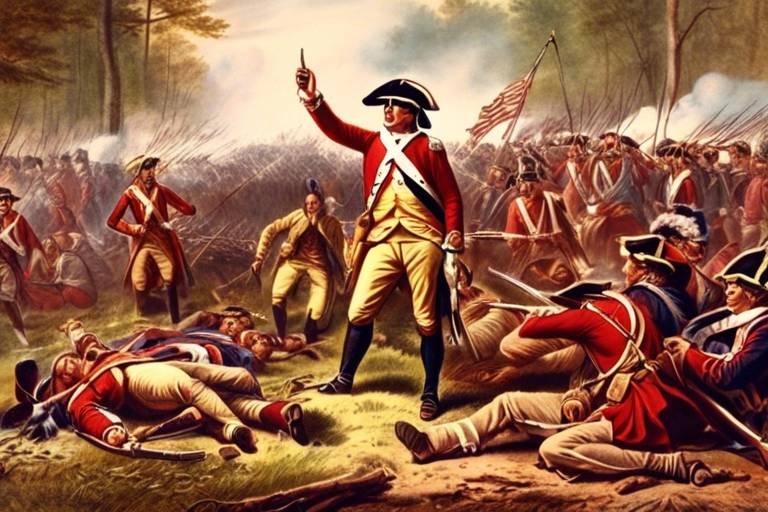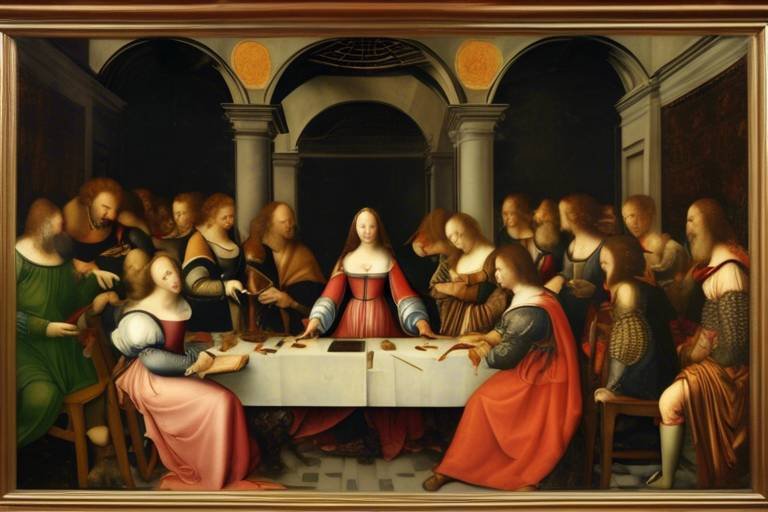The Role of Religion in Shaping Ancient Civilizations
Religion played a pivotal role in shaping the development, governance, and culture of ancient civilizations. The beliefs and practices of various religious systems profoundly influenced every aspect of society, leaving a lasting impact on architecture, art, social structures, and rituals.
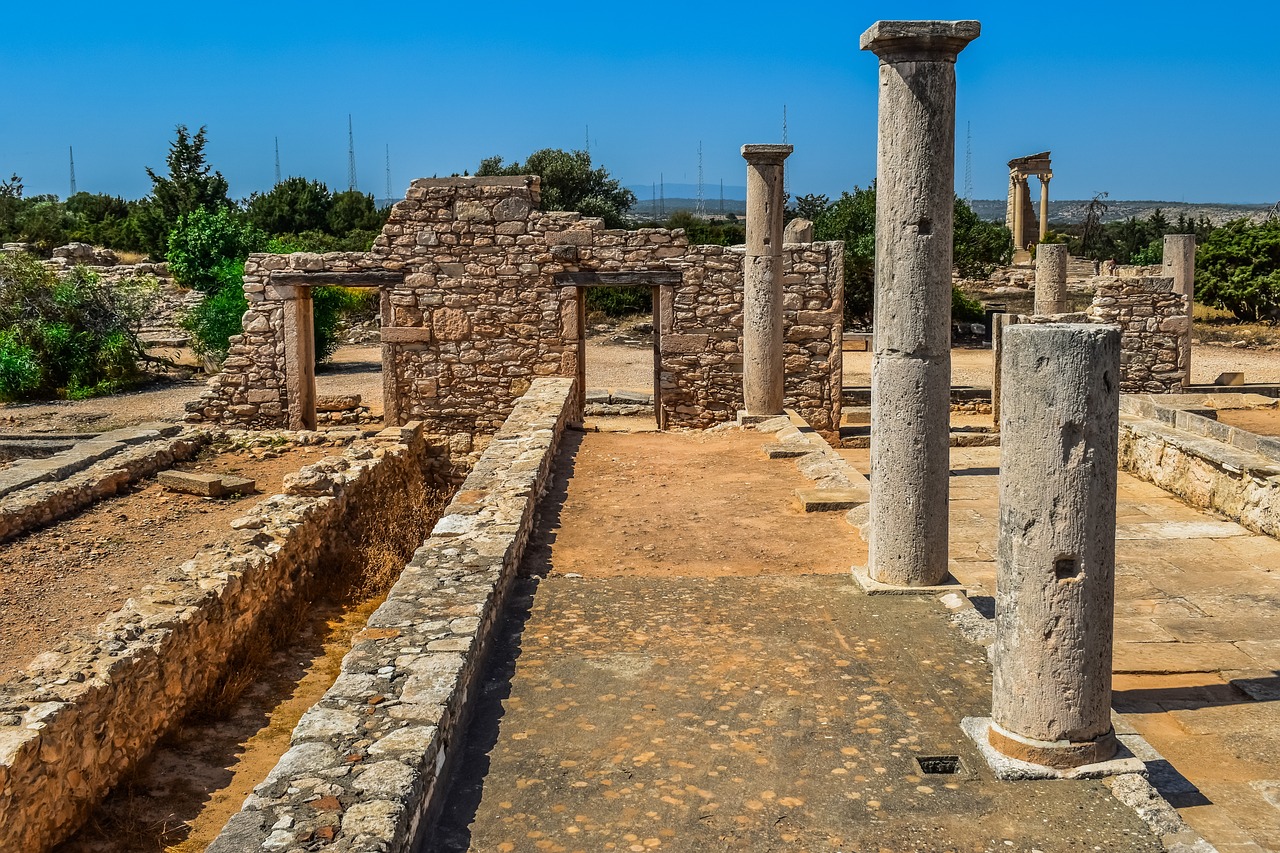
Impact on Governance
Exploring how religious beliefs influenced the growth, governance, and culture of ancient civilizations, impacting architecture, art, social structures, and rituals.
Religious beliefs played a pivotal role in shaping the governance structures of ancient civilizations. In many societies, rulers were often considered divine or chosen by the gods, giving them immense authority and legitimacy. The laws and regulations were often intertwined with religious doctrines, with leaders acting as intermediaries between the people and the divine. This close connection between religion and governance not only dictated the legal framework but also influenced political decisions and societal norms. The religious mandate of rulership provided a sense of order and stability, creating a system where obedience to divine will was synonymous with obedience to the state.
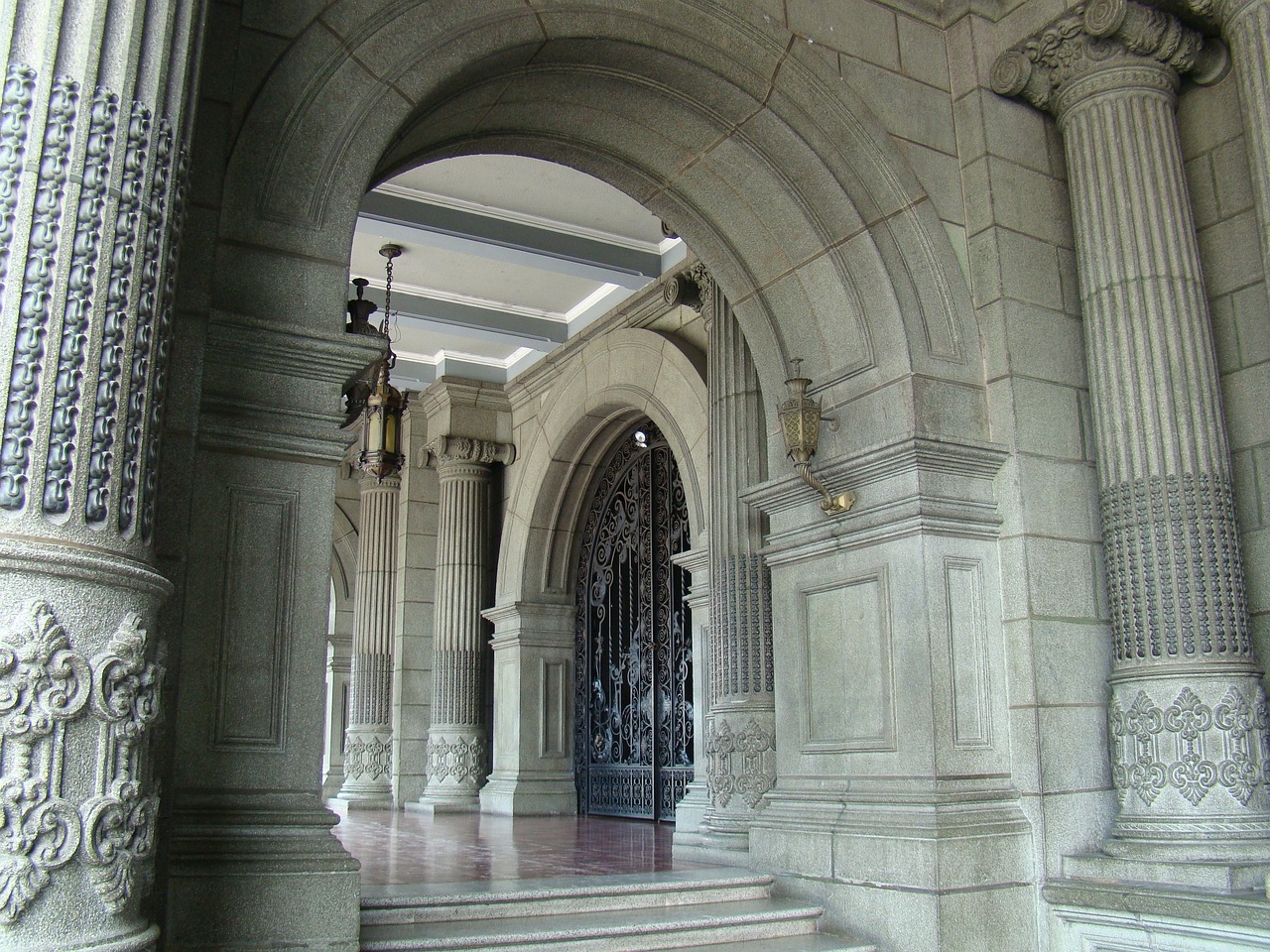
Architectural Influence
Exploring how religious beliefs influenced the growth, governance, and culture of ancient civilizations, impacting architecture, art, social structures, and rituals.
Religious beliefs held a profound influence on the architectural landscape of ancient civilizations. Temples, tombs, and monuments stood as testaments to the spiritual fervor and cultural values of these societies. The intricate designs and grandeur of these structures were not merely buildings but sacred spaces that served as centers of worship and community gatherings.
For example, the majestic pyramids of Egypt were not just monumental tombs for pharaohs but also symbols of the divine authority and eternal life. The intricate carvings on the walls of temples in Mesopotamia depicted mythological narratives and rituals, blending art with religious devotion.
Architectural marvels like the Parthenon in ancient Greece were dedicated to deities, embodying the ideals of beauty, harmony, and proportion revered in their religious beliefs. These structures not only showcased the craftsmanship and engineering prowess of the civilization but also provided a physical manifestation of their spiritual worldview.
Moreover, the layout and design of cities in ancient civilizations often revolved around religious centers, emphasizing the central role of faith in shaping urban planning. Streets aligned with temples, offering a visual reminder of the divine presence that permeated every aspect of daily life.
Through architectural expression, ancient civilizations immortalized their religious beliefs, leaving behind a legacy of awe-inspiring structures that continue to captivate and inspire modern generations.
- How did religious beliefs influence architectural styles in ancient civilizations?
- What role did architecture play in religious rituals and ceremonies?
- How have ancient architectural influences persisted in contemporary design?
In ancient civilizations, religious beliefs dictated the design, construction, and purpose of architectural structures, leading to the creation of monumental temples, tombs, and monuments that reflected spiritual values and served as centers of worship.
Architecture in ancient civilizations provided the physical space for religious rituals and ceremonies to take place, fostering a sense of community, reverence, and connection to the divine through the design and layout of sacred structures.
The architectural styles, motifs, and principles inspired by ancient civilizations continue to influence contemporary design, with echoes of past religious beliefs and cultural practices evident in modern buildings, monuments, and urban planning.
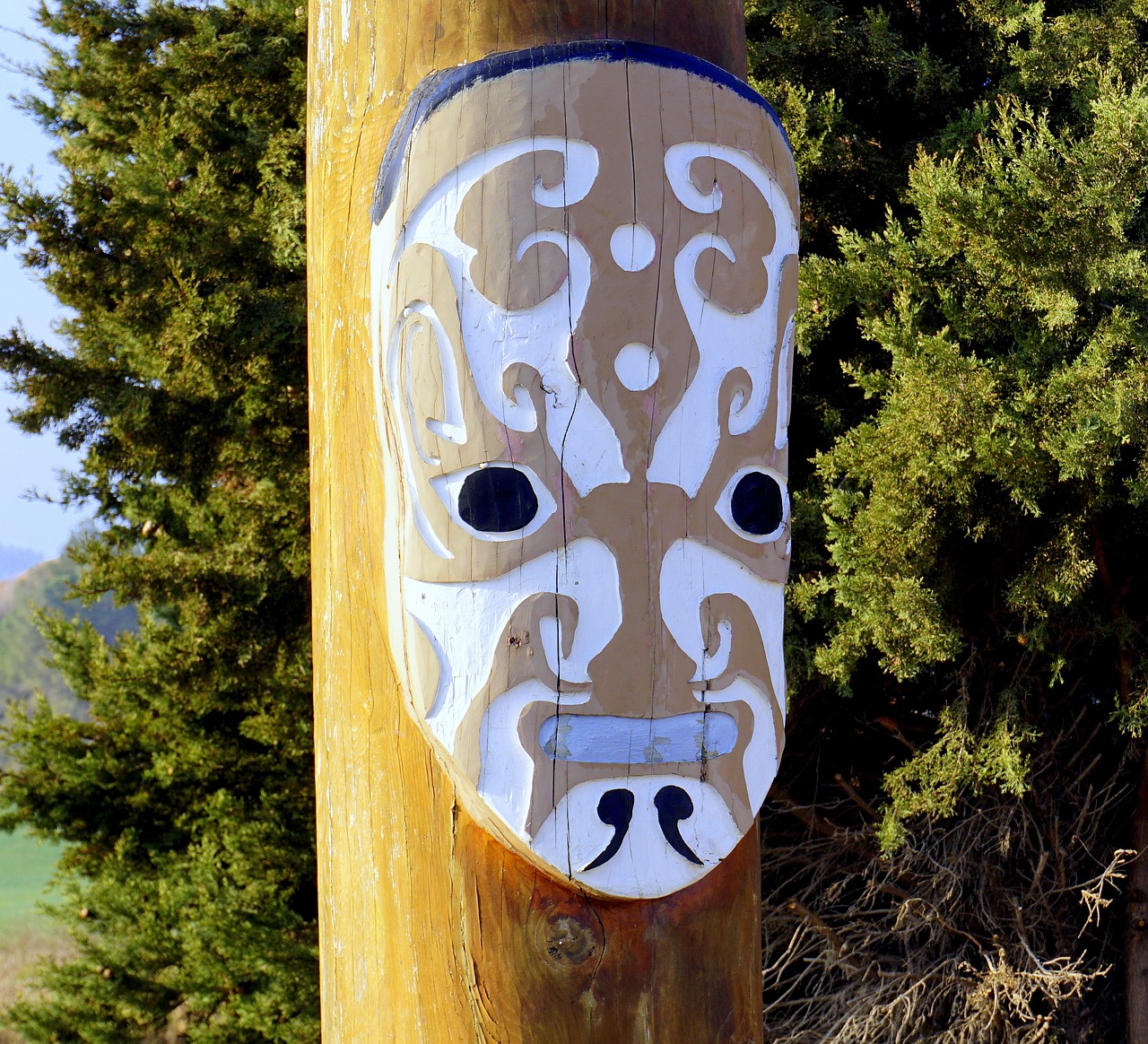
Social Structure and Rituals
In ancient civilizations, social structure was intricately intertwined with religious beliefs, shaping the hierarchy and relationships within communities. The role of religion in defining social classes, from rulers and priests to artisans and laborers, established a sense of order and duty among individuals. Families often adhered to religious rituals that governed daily life, from birth ceremonies to burial practices, reinforcing the importance of tradition and community ties.
Moreover, religious festivals and ceremonies played a vital role in uniting people and reinforcing shared beliefs. These events served as occasions for collective worship, feasting, and storytelling, fostering a sense of belonging and identity among members of society. The rituals associated with major life events, such as weddings and funerals, were deeply rooted in religious symbolism, highlighting the spiritual significance of these milestones.
Within the social structure, religious institutions held significant power and influence, often serving as mediators between the divine and the earthly realms. Priests and priestesses played essential roles in conducting ceremonies, interpreting omens, and offering guidance to the community based on religious teachings. The rituals performed by these religious figures were seen as essential for maintaining harmony with the gods and ensuring the prosperity of the civilization.
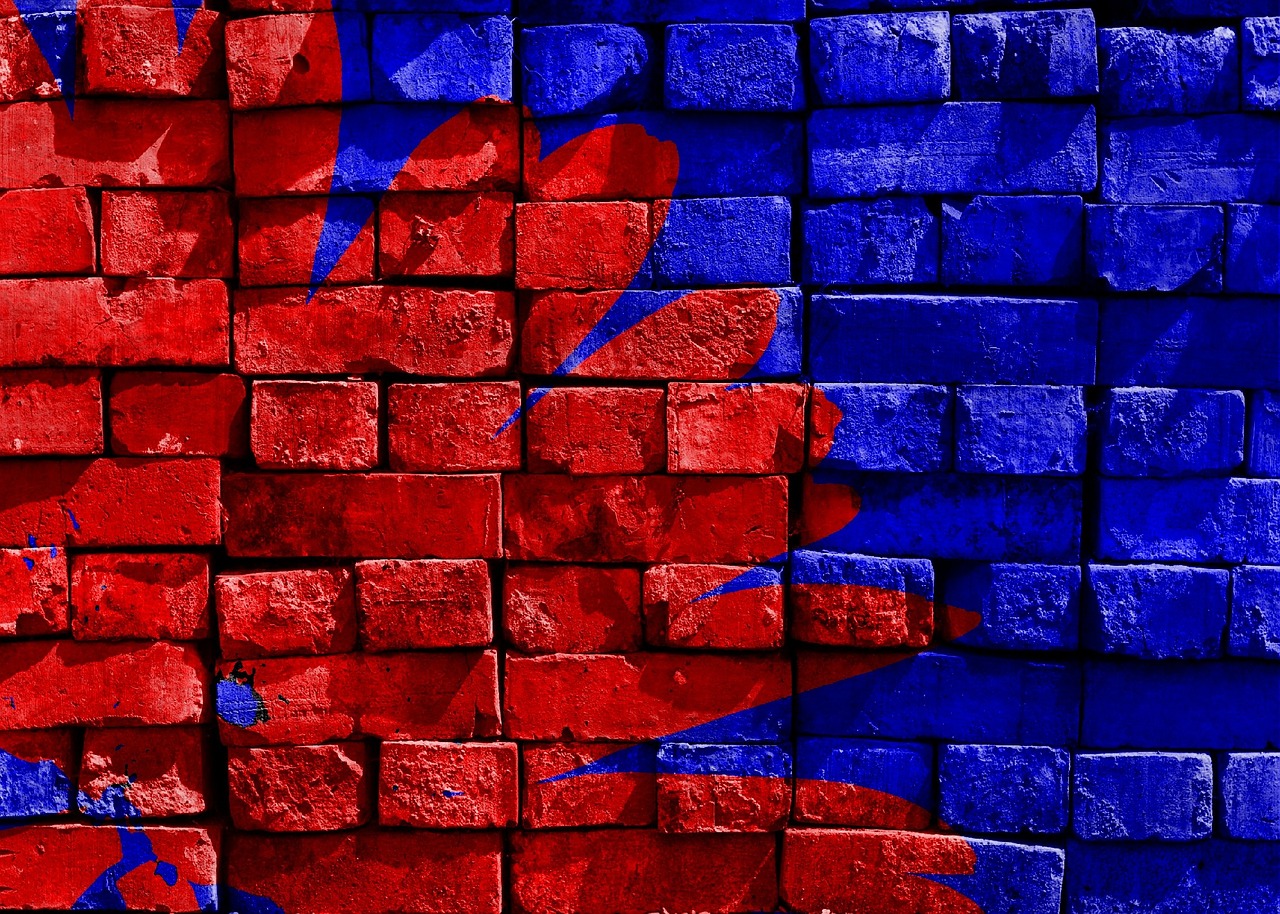
Artistic Expression
Exploring how religious beliefs influenced the growth, governance, and culture of ancient civilizations, impacting architecture, art, social structures, and rituals.
Artistic expression in ancient civilizations was deeply intertwined with religious beliefs, serving as a powerful medium to convey spiritual narratives and cultural values. Religion inspired the creation of intricate sculptures, vibrant paintings, and exquisite pottery, each piece telling a story of faith and tradition.
Artists in these ancient societies often depicted deities, mythological scenes, and religious ceremonies in their work, showcasing the importance of spirituality in everyday life. The art forms not only reflected the beliefs of the people but also served as a means of worship and reverence towards the divine.
Furthermore, religious symbols and motifs were prevalent in artistic creations, symbolizing cosmic order, divine protection, and the cyclical nature of life and death. These symbols added layers of meaning to the artwork, inviting viewers to contemplate the mysteries of existence and the interconnectedness of all things.
The of ancient civilizations not only showcased their technical skill and creativity but also provided insights into their spiritual beliefs and cultural practices. Through art, these societies immortalized their faith and traditions, leaving behind a rich legacy for future generations to admire and interpret.
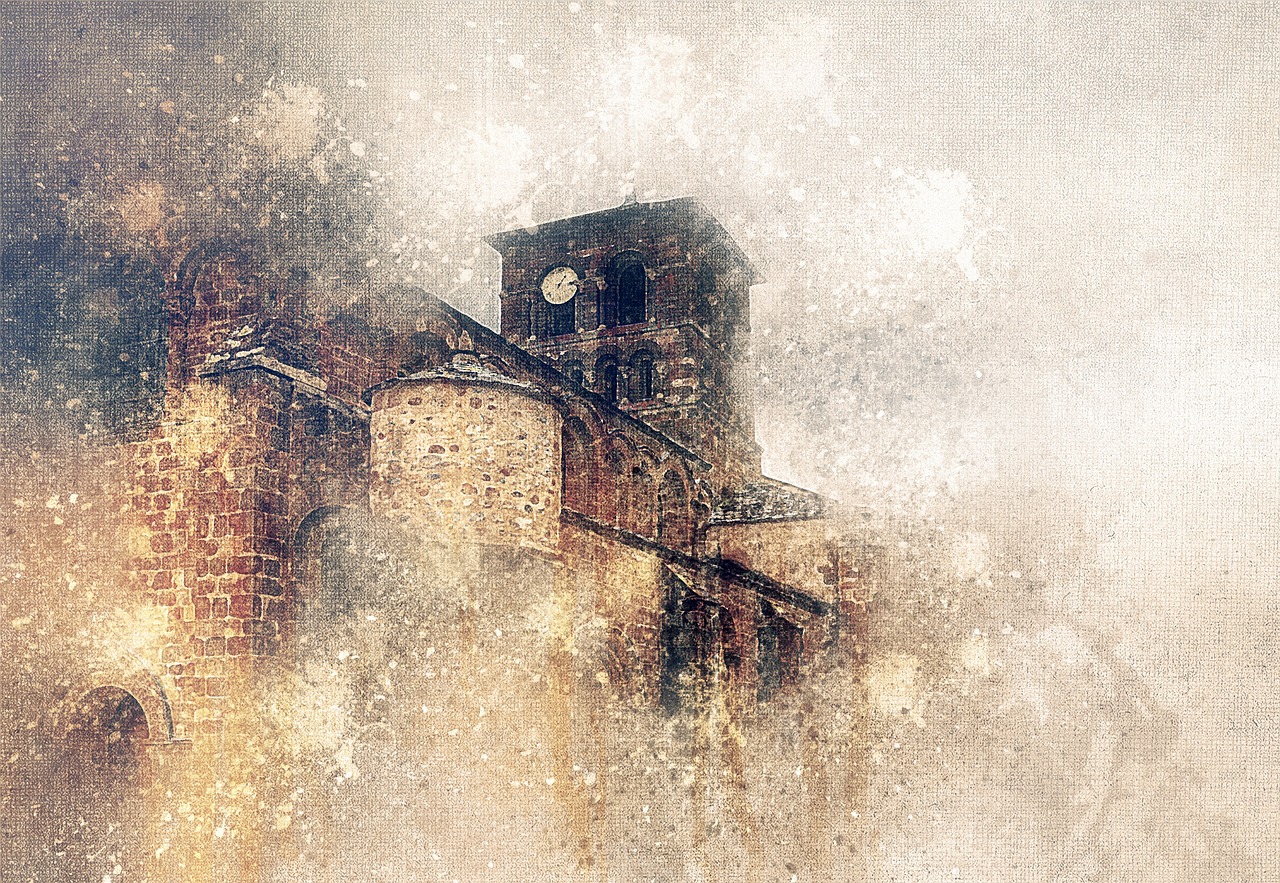
Technological Advancements
Exploring how religious beliefs influenced the growth, governance, and culture of ancient civilizations, impacting architecture, art, social structures, and rituals.
Religious practices in ancient civilizations were not limited to spiritual matters; they also played a significant role in driving technological advancements. The belief systems of these societies often intertwined with practical aspects of daily life, leading to innovations that transformed various fields.
One notable area where religious beliefs spurred technological progress was agriculture. Many ancient civilizations developed sophisticated irrigation systems to support their agricultural activities, driven by the need to ensure bountiful harvests to appease their deities. These advancements in irrigation not only boosted food production but also laid the foundation for sustainable farming practices that benefited the entire community.
Moreover, the architectural feats inspired by religious beliefs also contributed to technological advancements. The construction of grand temples, pyramids, and other religious structures demanded advanced engineering skills and knowledge of materials. As a result, ancient civilizations made significant strides in architecture and construction techniques, paving the way for future developments in building design and urban planning.
Craftsmanship and artistic production also flourished under the influence of religious beliefs. Skilled artisans crafted intricate religious artifacts, sculptures, and pottery, showcasing their expertise and creativity. These artistic endeavors not only served as expressions of faith but also pushed the boundaries of technological innovation in materials, techniques, and aesthetics.
Furthermore, the quest to honor gods and goddesses through elaborate rituals and ceremonies drove technological advancements in various fields. From the development of sophisticated ritual implements to the creation of ceremonial garments and decorations, religious practices inspired ancient civilizations to push the boundaries of their technological capabilities.
In essence, the technological advancements spurred by religious beliefs in ancient civilizations were not just practical innovations; they were manifestations of devotion, creativity, and ingenuity. These advancements not only improved the quality of life for individuals within these societies but also left a lasting legacy that continues to influence technological progress to this day.
If you have any questions about the role of religion in shaping ancient civilizations, check out our FAQs below:
- Q: How did religious beliefs influence the governance of ancient civilizations?
- A: Religious beliefs often dictated laws, leadership roles, and societal norms in ancient civilizations, shaping governance structures and political decisions.
- Q: What impact did religious architecture have on ancient societies?
- A: Religious architecture served as centers of worship and community gatherings, reflecting cultural values and inspiring technological advancements in construction.
- Q: How did religious rituals define social structures in ancient civilizations?
- A: Religious rituals fostered community cohesion, defined social hierarchies, and influenced daily practices, shaping individual identity within ancient societies.
- Q: What role did art play in expressing religious beliefs in ancient civilizations?
- A: Artistic expressions such as sculpture, painting, and pottery were influenced by religious themes and symbols, conveying spiritual beliefs and cultural narratives.

Trade and Cultural Exchange
Exploring how religious beliefs influenced the growth, governance, and culture of ancient civilizations, impacting architecture, art, social structures, and rituals.
Trade and cultural exchange played a pivotal role in the interconnectedness of ancient civilizations, facilitated by shared religious beliefs that transcended geographical boundaries. The exchange of goods, ideas, and technologies along trade routes not only enriched economies but also fostered cultural interactions and the dissemination of religious practices.
Religious beliefs often served as a common language that facilitated communication and understanding between diverse societies engaged in trade. Temples and religious sites became hubs for cultural exchange, where merchants, pilgrims, and travelers from different regions converged, bringing with them not only commodities but also a rich tapestry of beliefs, rituals, and traditions.
Moreover, the exchange of religious artifacts, symbols, and texts through trade routes contributed to the diffusion of spiritual ideologies and the syncretism of religious practices. As goods traversed vast distances, so did beliefs, leading to the blending of diverse religious traditions and the emergence of hybrid cultural expressions that reflected the interconnected nature of ancient civilizations.
Trade not only facilitated economic prosperity but also served as a conduit for the transmission of knowledge, artistry, and philosophical ideas. The Silk Road, for instance, not only linked the East and West in a web of commerce but also facilitated the exchange of religious philosophies, artistic techniques, and scientific innovations, shaping the intellectual landscape of ancient societies.
Through trade and cultural exchange, ancient civilizations transcended their individual identities to form a collective tapestry of shared experiences, beliefs, and aspirations. The interplay of religious influences in trade networks not only enriched material cultures but also nurtured a sense of interconnectedness and mutual understanding that transcended linguistic, ethnic, and political boundaries.
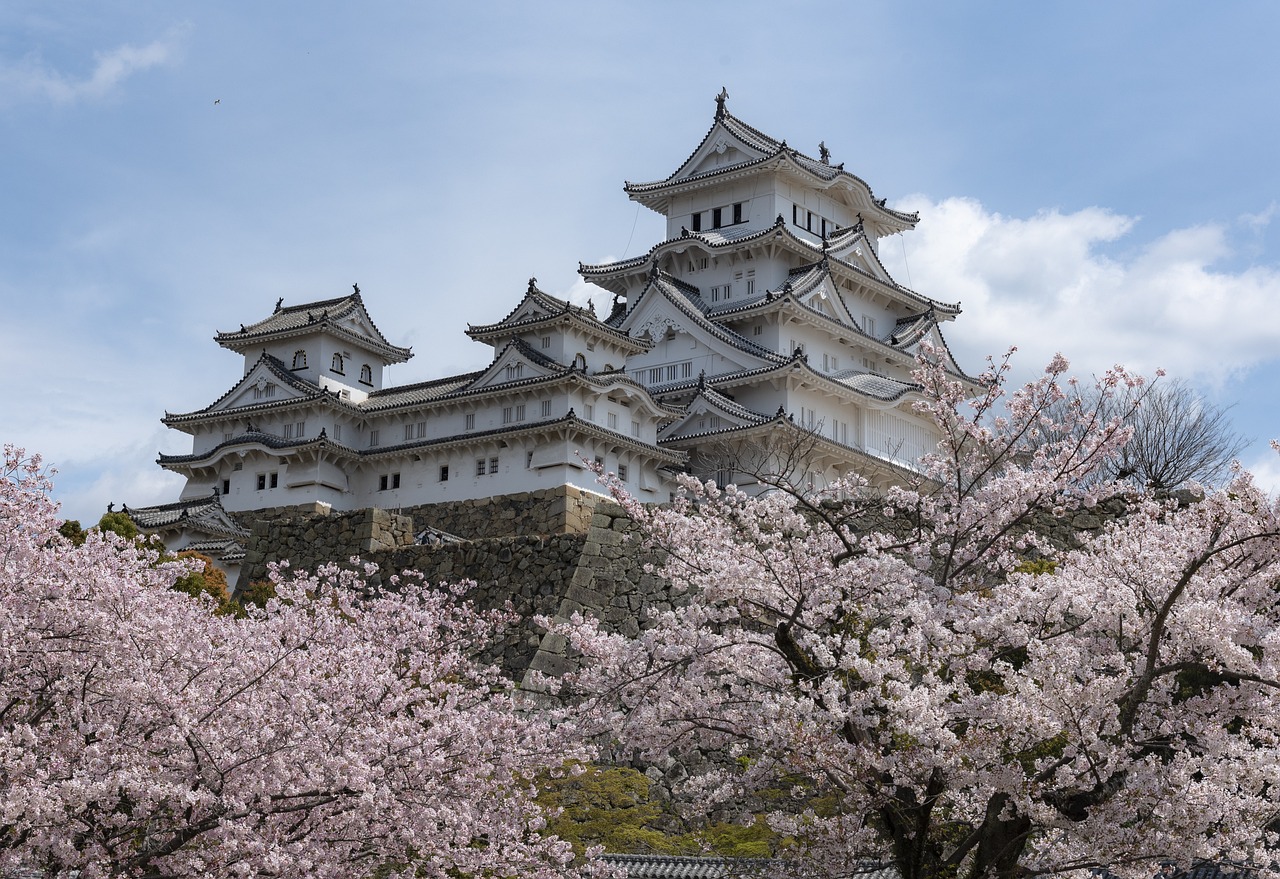
Decline and Transformation
As ancient civilizations evolved, the influence of religious beliefs on their societies underwent significant shifts, leading to moments of decline and transformation. The once unifying force of religion sometimes became a source of division, sparking conflicts and contributing to the downfall of empires. When religious practices diverged or faced challenges from external forces, civilizations experienced internal strife and external pressures that tested their resilience.
Moreover, the transformation of religious beliefs often accompanied broader societal changes, such as the rise of new philosophical ideas or the introduction of foreign traditions through trade and conquest. These shifts in religious practices could lead to cultural syncretism, where different belief systems merged, creating hybrid forms of worship and challenging established norms.
One example of decline and transformation can be seen in the ancient Egyptian civilization, where the shift from polytheism to monotheism under Pharaoh Akhenaten disrupted traditional religious practices and societal structures. This radical change, although short-lived, had lasting effects on Egyptian culture and governance, highlighting the delicate balance between religious innovation and societal stability.
Furthermore, the decline of religious institutions in some ancient civilizations paved the way for new power structures to emerge, leading to political upheavals and social unrest. As religious authority waned, secular leaders often filled the void, reshaping governance systems and redefining the relationship between the state and the divine.
In times of decline and transformation, ancient civilizations faced challenges that tested their resilience and adaptability. The interplay between religious beliefs, political structures, and cultural norms shaped the course of history, leaving behind legacies that continue to influence contemporary societies.
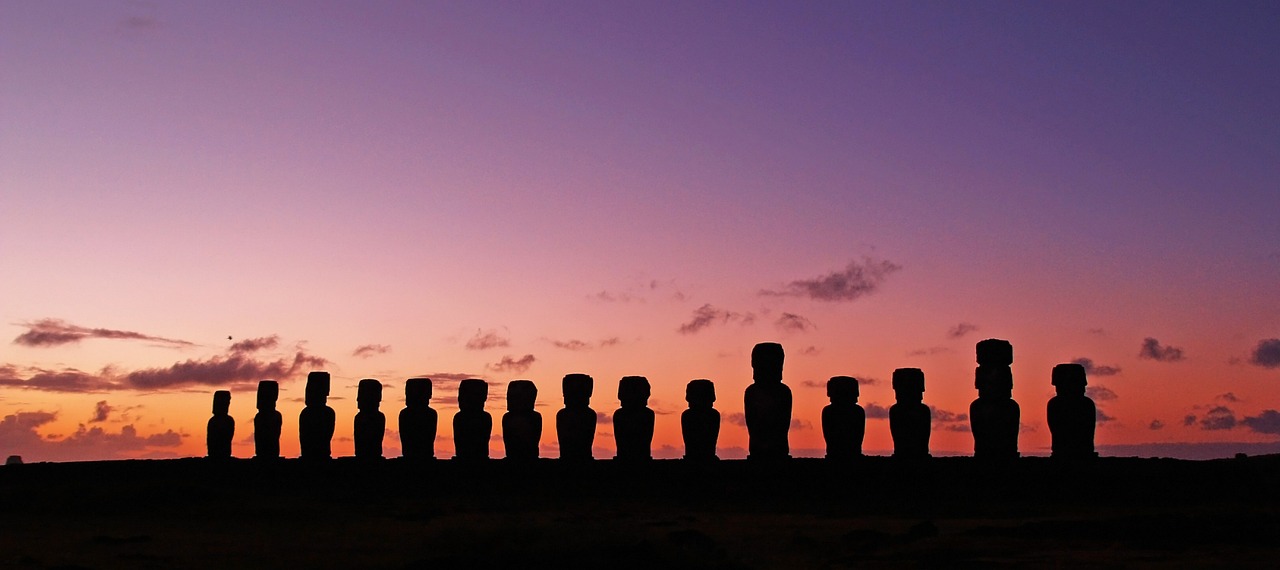
Legacy and Influence
Religion has left an indelible mark on ancient civilizations, shaping their governance, culture, and societal norms. The legacy of religious beliefs continues to influence contemporary societies, reflecting the enduring impact of ancient civilizations on our values and worldviews.
Through the lens of history, we can trace the profound influence of religion on the governance of ancient civilizations. Laws, leadership roles, and societal structures were often dictated by religious beliefs, shaping political decisions and defining the moral compass of these societies. The divine authority intertwined with earthly power, creating a complex tapestry of governance that reflected the spiritual values of the people.
Architectural marvels stand as testaments to the power of religious inspiration in ancient civilizations. Temples, tombs, and monuments were not merely structures of stone and mortar but embodiments of cultural values and spiritual significance. These edifices served as centers of worship, community gatherings, and artistic expression, showcasing the intricate relationship between religion and architecture.
Social hierarchies, family structures, and daily rituals were intricately woven into the fabric of ancient societies through religious beliefs. Religion played a pivotal role in defining individual identity, fostering community cohesion, and establishing societal norms. The rituals and ceremonies associated with religious practices served as a unifying force, binding communities together in shared beliefs and traditions.
The artistic expression of ancient civilizations was deeply intertwined with religious themes and symbols. Sculpture, painting, pottery, and other art forms served as vehicles for conveying spiritual beliefs, cultural narratives, and mythological tales. The intricate details of religious iconography adorned artistic creations, serving as visual representations of the divine and the mystical.
Technological advancements in ancient civilizations were often driven by religious practices and beliefs. Innovations in agriculture, architecture, and craftsmanship were spurred by the need to fulfill religious obligations, construct sacred spaces, and create objects of worship. From irrigation systems to construction techniques, religious influence permeated every aspect of technological progress.
Trade routes, cultural interactions, and the spread of ideas between ancient civilizations were profoundly influenced by religious beliefs. The exchange of goods, knowledge, and cultural practices was often facilitated by shared religious traditions, fostering diversity and cross-cultural pollination. Religious beliefs acted as bridges connecting distant lands and disparate cultures, creating networks of trade and cultural exchange.
Shifts in religious beliefs often heralded the decline or transformation of ancient civilizations. Cultural upheavals, political unrest, and societal reorganization were frequently precipitated by changes in religious practices and ideologies. The ebb and flow of religious fervor shaped the destinies of civilizations, leading to periods of growth, stagnation, and decline.
The enduring legacy of religious traditions from ancient civilizations continues to exert influence on contemporary societies. Values, ethics, and moral frameworks rooted in ancient religious beliefs shape the way we perceive the world and interact with one another. The echoes of the past resonate in our present, reminding us of the profound impact of religion on human history.
Frequently Asked Questions
- 1. How did religion influence governance in ancient civilizations?
Religion played a significant role in shaping governance in ancient civilizations by providing a moral framework for laws and leadership. Rulers often claimed divine authority, and religious beliefs dictated societal norms and political decisions.
- 2. What architectural structures were inspired by religious beliefs?
Religious beliefs inspired the construction of temples, tombs, and monuments in ancient civilizations. These structures served as centers of worship and community gatherings, reflecting cultural values and spiritual significance.
- 3. How did religion impact social structures and daily rituals?
Religion defined social hierarchies, family structures, and daily rituals in ancient societies. It fostered community cohesion, provided a sense of identity, and influenced interactions between individuals within the community.
- 4. In what ways did religious themes influence artistic expression?
Religious themes and symbols influenced various art forms such as sculpture, painting, and pottery in ancient civilizations. Artists used these motifs to convey spiritual beliefs, cultural narratives, and societal values.
- 5. How did religious practices drive technological advancements?
Religious practices in ancient civilizations led to innovations in agriculture, architecture, and craftsmanship. These advancements resulted in improved irrigation systems, construction techniques, and artistic production.
- 6. What was the impact of religious beliefs on trade and cultural exchange?
Religious beliefs influenced trade routes, cultural interactions, and the exchange of ideas between ancient civilizations. They facilitated cultural diversity and the spread of knowledge across regions.
- 7. How did shifts in religious beliefs contribute to the decline of ancient civilizations?
Changes in religious beliefs often led to cultural upheavals, political unrest, and societal reorganization in ancient civilizations. These shifts could contribute to the decline or transformation of a civilization.
- 8. What is the enduring legacy of religious traditions from ancient civilizations?
The religious traditions of ancient civilizations continue to shape contemporary societies, values, and worldviews. They have left a lasting impact on cultural practices, ethical beliefs, and philosophical thought.





